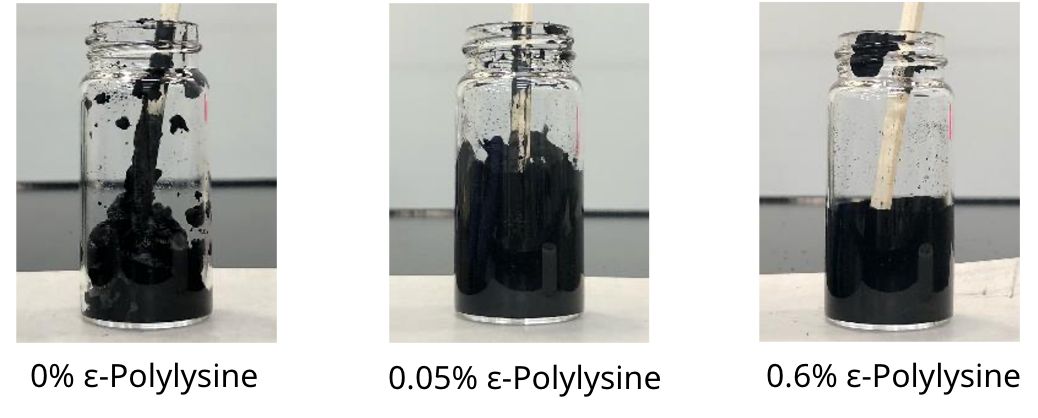
Features of ε-Polylysine
Functions of ε-Polylysine
ε-Polylysine, a cationic polymer, has various functions such as:
-
- Antimicrobial effect
- ε-Polylysine has a growth inhibitory effect on various microorganisms.
-
- Aggregation effect
- ε-Polylysine has the effect of aggregating and precipitating bacterial cell, proteins, nucleic acids, polysaccharides, and the like.
-
- Adsorption effect
- ε-Polylysine has the effect of adsorbing to various substances and modifying their surfaces.
-
- Deodorizing effect
- ε-Polylysine has the effect of removing odors.
-
- Dispersion effect
- ε-Polylysine has the effect of dispersing hydrophobic particles.
Antimicrobial effect of ε-Polylysine
Antimicrobial effect that suppresses the growth of microorganisms
ε-Polylysine has a growth inhibitory effect on various microorganisms.
The anrimicrobial mechanism of ε-Polylysine is that the electrostatic interaction between the cationic site of ε-Polylysine and the anionic site on the surface of the cell membrane of microorganisms damages the cell membrane and inhibits growth.
Due to such a simple mechanism, it exhibits growth inhibitory effects on various microorganisms (Gram-positive bacteria, Gram-negative bacteria, yeast, fungi, etc.).
Minimum inhibitory concentration (MIC) for various microorganisms
| Microorganism | Minimum inhibitory concentration mg/L |
|---|---|
| Lactobacillus brevis | 10 |
| Lactococcus lactis | 100 |
| Escherichia coli ( NBRC 13500) | 50 |
| Staphylococcus aureus | 12 |
| Pseudomonas aeruginosa | < 3 |
| Salmonella enterica subsp. enterica | 16 |
| Bacillus subtilis | 3 |
| Bacillus cereus | 50 |
| Geobacillus stearothermophilus | 5 |
| Micrococccus luteus | 16 |
| Clostridium sporogenes | 32 |
| Campylobacter jejuni | 100 |
| Saccharomyces cerevisiae | 50 |
| Candida albicans | 250 |
| Candida utilis | < 3 |
| Pichia membranifaciens | < 3 |
| Wickerhamomyces anomalus | 150 |
| Zygosaccharomyces rouxii | 150 |
| Rhodotorula lactosa | 25 |
| Aspergillus brasiliensis | 250 |
| Malassezia furfur | 16 |
ε-Polylysine exhibits antimicrobial effect over a wide pH range
ε-Polylysine has a lower minimum inhibitory concentration (MIC) and exhibits excellent antimicrobial activity over a wide pH range when compared to existing raw materials with antimicrobial activity. Therefore, it is possible to improve the shelf life without spoiling the flavor of the food.
MIC (mg/L) of various antibacterial agents against E. coli at each pH
| Classification | Antimicrobial agent | pH | |||||
|---|---|---|---|---|---|---|---|
| 5 | 6 | 7 | 8 | 9 | |||
| Preservative | ε-Polylysine | 25 | 25 | 50 | 50 | 200 | |
| Sorbic acid | 8,700 | 13,400 | 15,000 | 25,000 | - | ||
| Shelf life improver | Acetic acid | 15,000 | 35,000 | 35,000 | 60,000 | - | |
| Glycine | 35,000 | 20,000 | 15,000 | 10,000 | 10,000 | ||
Excellent bacteriostasis even when heated
ε-Polylysine does not easily lose its antimicrobial properties even when heated. The antimicrobial property was maintained even after heating at 120°C for 20 minutes. Therefore, it can be used as an additive to food and in a wide range of applications for other industrial agents.
Minimum inhibitory concentration (MIC) against E. Coli (NBRC13500)
| Heating conditions | Minimum inhibitory concentration(mg/L) |
|---|---|
| No heating | 50 |
| 80℃, 60 minutes | 50 |
| 100℃, 30 minutes | 50 |
| 120℃, 20 minutes | 50 |
ε-Polylysine exhibits excellent bactericidal effect
Ingredients such as acetic acid that improve shelf life have a bacteriostatic effect, but ε-Polylysine can be expected to have a bactericidal effect. When ε-Polylysine is used in combination with ingredients that improve shelf life, such as acetic acid, it is expected that the expiration date will be extended due to the synergistic effect.
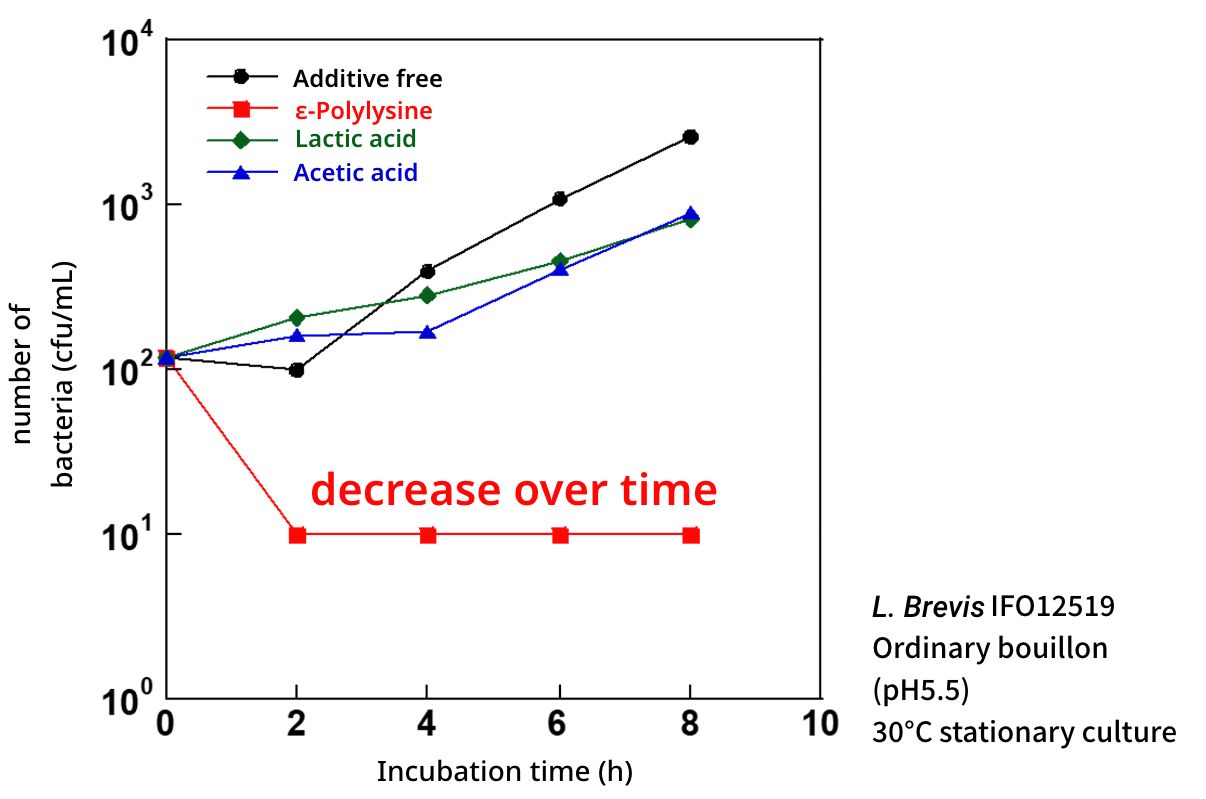
ε-Polylysine aggregates proteins etc.
ε-Polylysine has the effect of aggregating and precipitating bacterial cell, proteins, nucleic acids, polysaccharides, etc.
Due to the interaction between the cation site of ε-Polylysine and the anion site of bacterial cell, etc., it exhibits strong agglutinating properties.
Aggregation / precipitation effect of bacteria
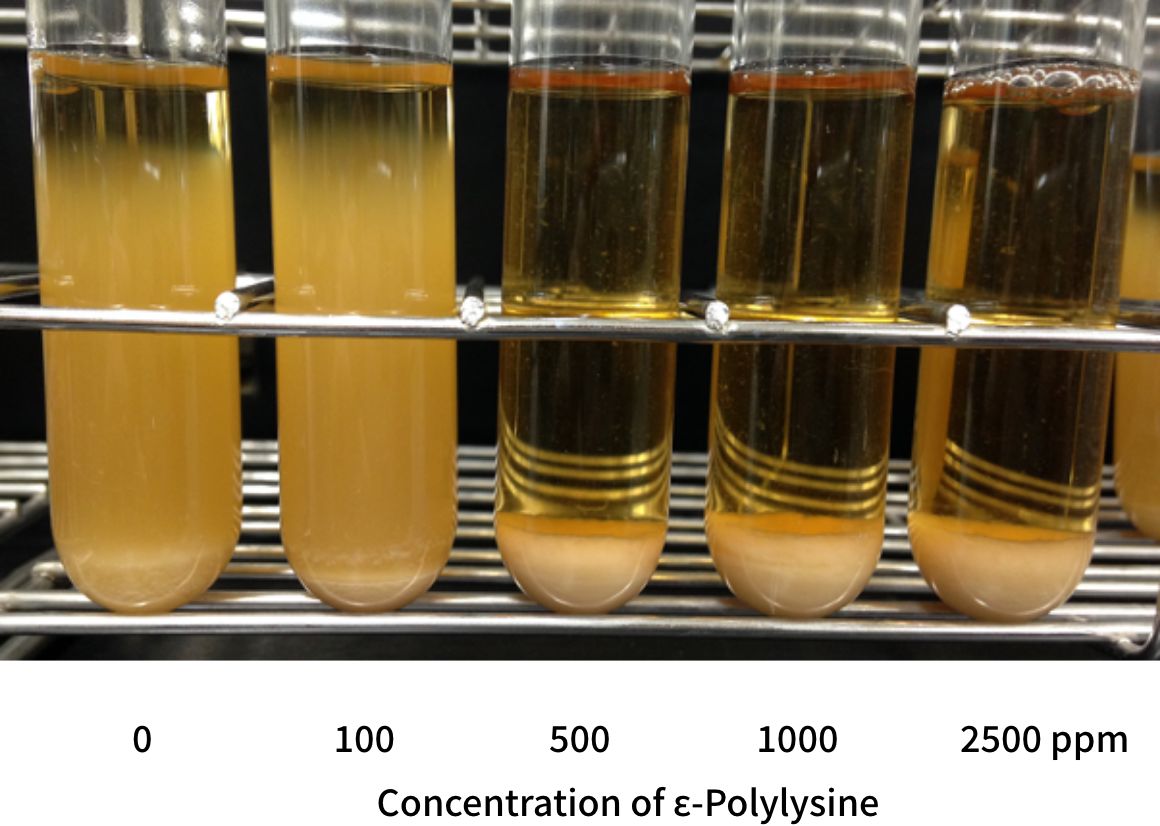
Aggregation / precipitation effect of xanthan gum
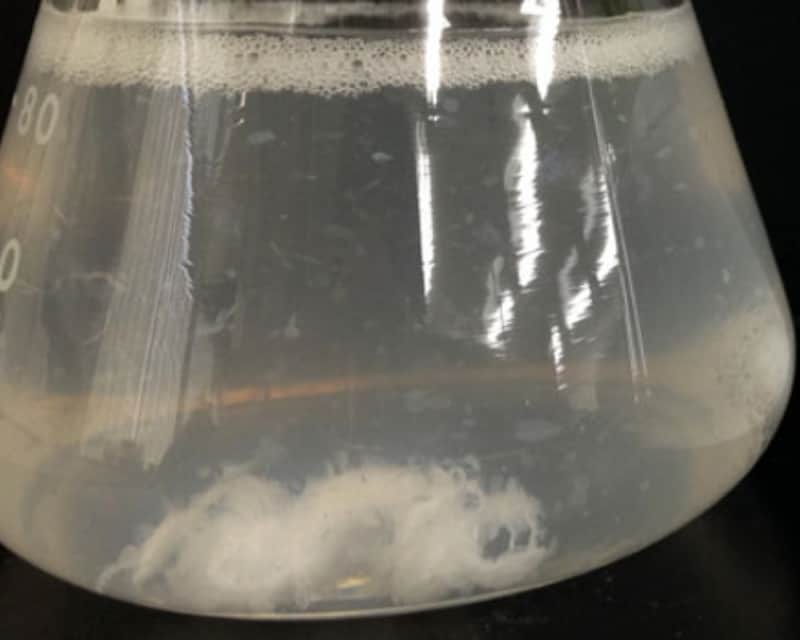
Adsorption effect as scaffold material for cells
ε-Polylysine has the effect of adsorbing cells. Due to its extremely low toxicity, various cells can be stably established.
ε-Polylysine showed better cell adhesion effect than α-Polylysine in HeLa D98 cell culture.
-
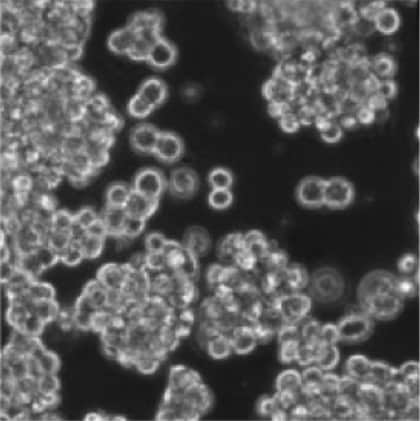
Uncoated
-
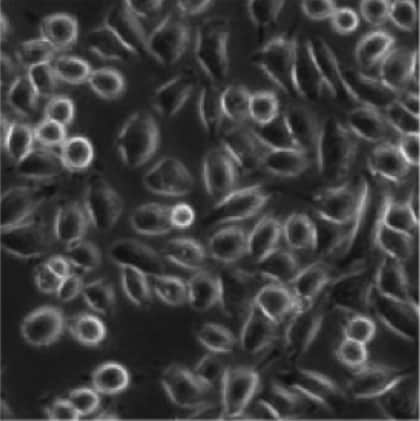
α-Polylysine
-
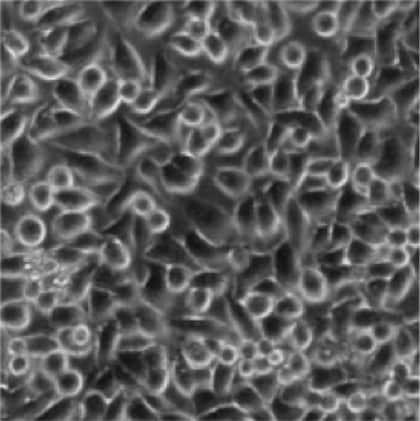
ε-Polylysine
Adsorption of ε-Polylysine to horny cell layer and hair
ε-Polylysine has the effect of adsorbing to hair and stratum corneum. Hair treated with ε-Polylysine showed improved combability and cuticle protection. You can expect the effect of ε-Polylysine to improve hair quality.
Adsorption of fluorescently labeled ε-Polylysine to human stratum corneum
-

0 μg/mL
-
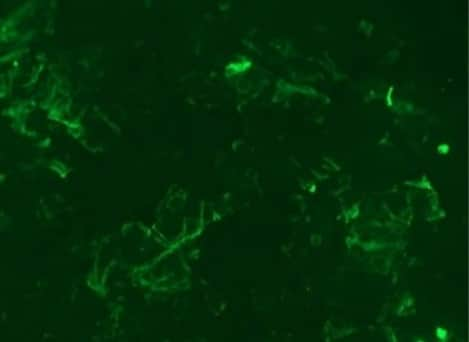
10 μg/mL
-
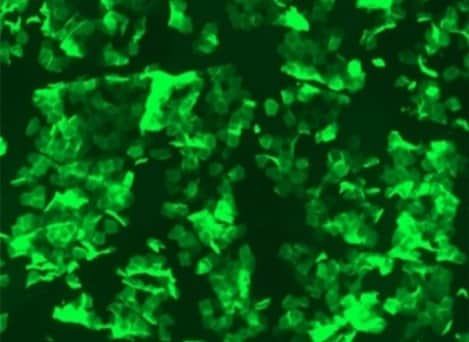
30 μg/mL
-
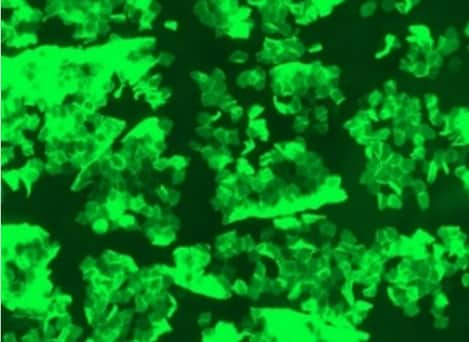
100 μg/mL
- Fluorescence intensity increased depending on ε-Polylysine concentration
Adsorption of fluorescently labeled ε-Polylysine to human horny cell layer
-
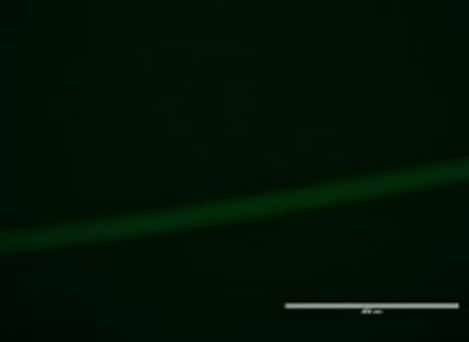
0 μg/mL
-
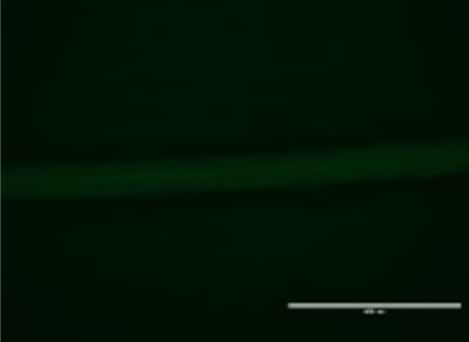
1 μg/mL
-
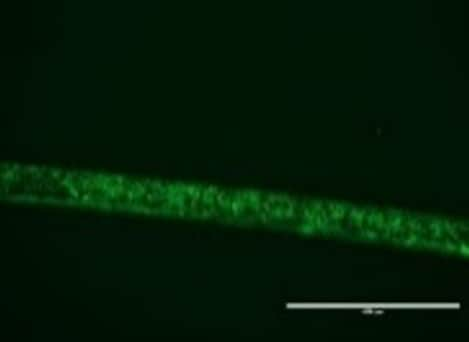
10 μg/mL
-
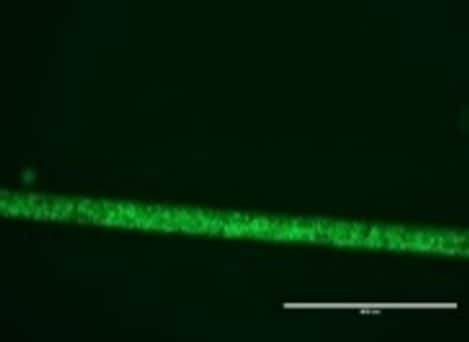
100 μg/mL
- Fluorescence intensity increased depending on ε-Polylysine concentration
provided from Professor Tetsuji Hirao
in Mukogawa Woman’s University
Deodorizing effect of ε-Polylysine
A deodorizing effect was obtained by adding ε-Polylysine to the malodorous substance. In particular, it exhibits deodorizing effects on lower fatty acids.

Malodorants, ε-Polylysine or pure water were added to F2s bags. It was filled with air, sealed and placed in a warm bath. After standing to cool, the concentration of malodorous substances was measured with a detector tube.
Dispersion effect of ε-Polylysine
Dispersion of nanomaterials by ε-Polylysine
Adding ε-Polylysine improves the dispersibility of carbon black in water. Nanomaterials are known to aggregate due to van der Waals forces. Since ε-Polylysine is a cationic polymer, it can suppress van der Waals forces and allow nanomaterials to be well dispersed.
Appearance immediately after adding carbon black to each concentration of ε-Polylysine aqueous solution.
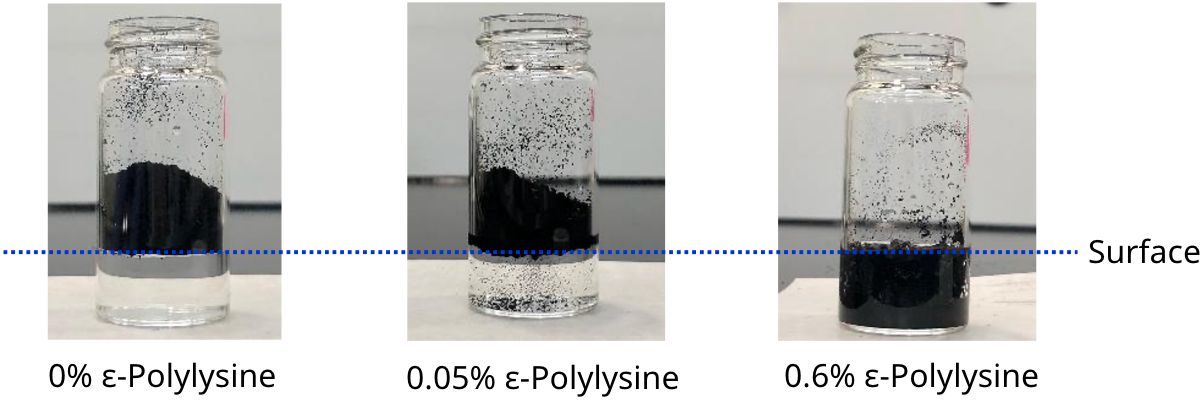
Stirring after adding carbon black to ε-Polylysine aqueous solution of each concentration.
